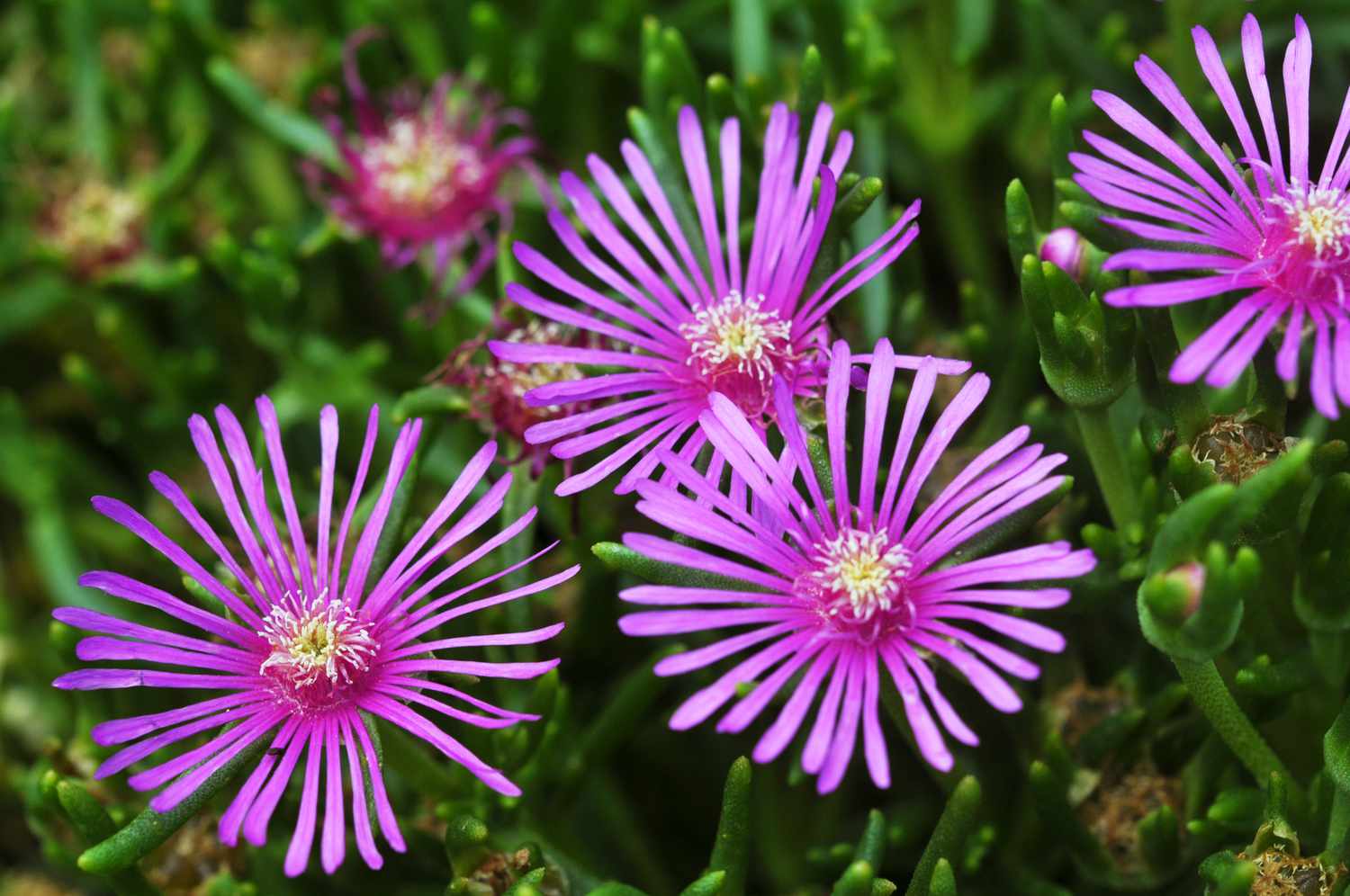
Ice plants are more than just pretty ground cover; they’re fascinating succulents with unique traits. Ever wondered why they’re called ice plants? It’s because their leaves sparkle like ice crystals in the sun. These hardy plants thrive in harsh conditions, making them perfect for low-maintenance gardens. They’re not just eye candy; ice plants also play a role in preventing soil erosion. Plus, they attract pollinators like bees and butterflies, adding life to your garden. Want to know more about these resilient beauties? Here are 15 intriguing facts about ice plants that will make you appreciate them even more.
Key Takeaways:
- Ice plants are stunning succulents with shimmering, crystal-like leaves. They are drought-tolerant, bloom in vibrant colors, and attract pollinators, making them a low-maintenance and beneficial addition to any garden.
- Ice plants have unique growth habits, including their preference for well-drained soil and full sun. They are easy to propagate, low-maintenance, and offer benefits such as preventing soil erosion and even being edible!
What is an Ice Plant?
Ice plants are fascinating succulents known for their shimmering, crystal-like appearance. These plants are not just visually appealing but also have some intriguing characteristics.
-
Ice plants belong to the Aizoaceae family. This family includes over 1,800 species of flowering plants, many of which are native to South Africa.
-
The name "ice plant" comes from their unique appearance. Tiny, glistening bladder cells on their leaves and stems look like ice crystals, giving the plant its frosty name.
-
Ice plants are drought-tolerant. They store water in their leaves, making them perfect for arid environments and low-maintenance gardens.
-
They bloom in vibrant colors. Ice plants produce bright, daisy-like flowers in shades of pink, purple, yellow, and white, adding a splash of color to any landscape.
How Do Ice Plants Grow?
Understanding the growth habits of ice plants can help gardeners cultivate them successfully. These plants have specific needs that, when met, allow them to thrive.
-
Ice plants prefer well-drained soil. Sandy or gravelly soil works best, as it prevents water from pooling around the roots, which can cause rot.
-
They thrive in full sun. Ice plants need plenty of sunlight to grow and bloom. They are ideal for sunny spots in the garden or on a windowsill.
-
Propagation is easy. Ice plants can be propagated from cuttings. Simply cut a healthy stem, let it dry for a day or two, then plant it in well-drained soil.
-
They are low-maintenance. Once established, ice plants require minimal care. Occasional watering and pruning are usually enough to keep them healthy.
What Are the Benefits of Ice Plants?
Ice plants offer more than just aesthetic appeal. They have several benefits that make them a valuable addition to any garden.
-
They attract pollinators. The bright flowers of ice plants attract bees, butterflies, and other pollinators, helping to support local ecosystems.
-
Ice plants can prevent soil erosion. Their extensive root systems help stabilize soil, making them useful for erosion control on slopes and hillsides.
-
They are edible. Some species of ice plants are edible and can be used in salads or as a garnish. They have a slightly salty taste and a crunchy texture.
-
Ice plants have medicinal properties. In traditional medicine, ice plants have been used to treat various ailments, including skin conditions and digestive issues.
Interesting Facts About Ice Plants
Beyond their basic characteristics and benefits, ice plants have some unique and surprising traits.
-
Ice plants can survive frost. Despite their name, ice plants can tolerate light frost, making them suitable for a range of climates.
-
They have a unique photosynthesis process. Ice plants use CAM (Crassulacean Acid Metabolism) photosynthesis, which allows them to conserve water by opening their stomata at night instead of during the day.
-
Ice plants are used in landscaping. Their low-growing, spreading habit makes them excellent ground cover, and they are often used in rock gardens, borders, and as decorative accents.
Ice plants are more than just pretty succulents. Their unique appearance, easy care, and numerous benefits make them a fantastic choice for gardeners and plant enthusiasts alike.
Final Thoughts on Ice Plants
Ice plants are more than just pretty ground cover. These hardy succulents thrive in tough conditions, making them perfect for low-maintenance gardens. Their vibrant blooms attract pollinators like bees and butterflies, adding life to any space. Plus, they help prevent soil erosion with their dense mat of foliage.
These plants are also water-wise, needing little irrigation once established. This makes them ideal for drought-prone areas. Their ability to grow in poor soil means they can flourish where other plants might struggle.
Ice plants come in various colors, from bright pinks to sunny yellows, offering plenty of choices for gardeners. They’re easy to propagate, too—just snip a piece and plant it. With minimal care, ice plants can bring beauty and resilience to your garden. So, if you’re looking for a tough yet stunning addition to your landscape, ice plants are a fantastic option.
Frequently Asked Questions
Was this page helpful?
Our commitment to delivering trustworthy and engaging content is at the heart of what we do. Each fact on our site is contributed by real users like you, bringing a wealth of diverse insights and information. To ensure the highest standards of accuracy and reliability, our dedicated editors meticulously review each submission. This process guarantees that the facts we share are not only fascinating but also credible. Trust in our commitment to quality and authenticity as you explore and learn with us.


